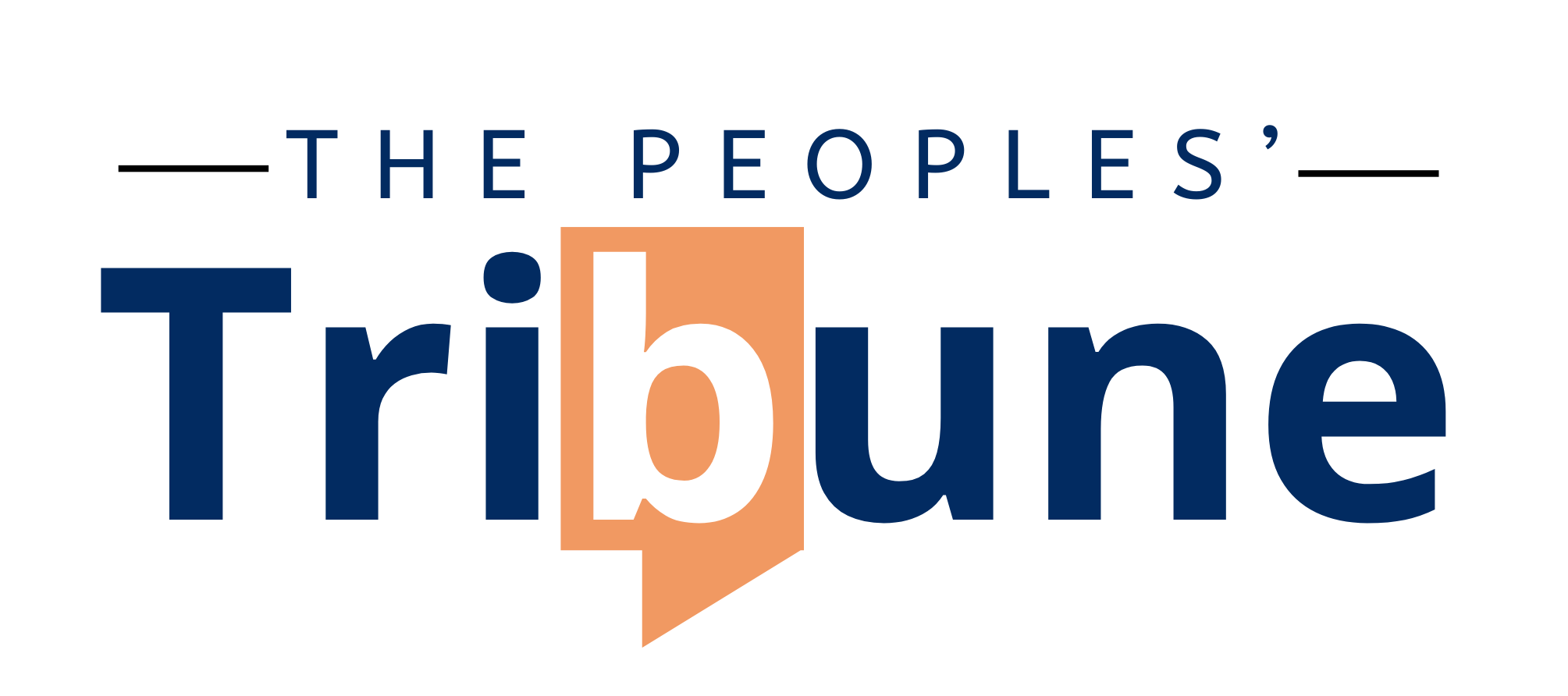Judianne Hoeve-Labega on BTP’s designed strategy towards a G4 Regulator for 2030

The Bureau Telecommunications and Post St. Maarten (BTP) recently unveiled its Strategic Roadmap 2025-2030 and described it as “a declaration of intent” that sets the tone for a more transparent, innovative, and digitally resilient St. Maarten. The roadmap places BTP at the center of two major shifts at once: a move from its current G2 regulatory status toward a more advanced G4 model, and a new oversight role for water, electricity, and gas tariffs that links regulation to the island’s long term energy transition.
To better understand what this means in practice, The Peoples' Tribune reached out to Interim BTP Director Judianne Hoeve-Labega. Her answers point to an institution in transition, busy rewriting its own foundation while preparing for a future shaped by data, cybersecurity, artificial intelligence, and complex utility markets.
This is a long term project, built in phases, and it begins with law.

Building a G4 regulator starts with rewriting the rules
Moving from a G2 to a G4 regulator is not a matter of new slogans. Hoeve-Labega is clear that BTP’s ambitions only become real if policy and legislation are updated to match.
“Yes. Moving toward a G4 regulatory model requires updates to both policy and legislation to ensure the framework supports a modern, converged regulator,” she explains. “These changes are currently being prepared and reviewed within government. The timing for tabling in Parliament will depend on the legislative process, which is beyond BTP’s direct control.”
The list of instruments under revision is long. It includes the national Telecom Law, the Instellingsbesluit (establishment decree) of BTP, new telecom concession agreements, and key national policies such as the Numbering Plan. The goal is to align St. Maarten’s legal and operational framework with international best practices instead of patching gaps case by case.
“Key updates include the revision of the national Telecom Law, the Instellingsbesluit of BTP, new telecom concession agreements, and national policies such as the Numbering Plan,” Hoeve-Labega says. “These updates aim to align the legal and operational framework with international best practices. BTP’s legal team is working closely with the Ministry of TEATT and Government Legal Affairs to ensure a coherent approach.”
Her answer hints at an important point. BTP cannot simply declare itself a next generation regulator. The structure has to be recognized in law, backed by clear mandates, and supported by a governance model that allows effective and independent action.
Year one: laying the foundation
The five year roadmap stretches to 2030, but the first year is deliberately focused on basics rather than flashy new projects. When asked for the top five deliverables in year one, Hoeve-Labega frames them as foundation building.
“The first year focuses on establishing the legal and institutional foundation for transformation,” she says. “Core deliverables include updated telecom legislation and policies, a clearer governance structure to strengthen independence, and preparatory work to expand into a utility regulatory role. These steps set the stage for more advanced G4 capabilities in the years ahead.”
Some of that expansion is already visible. BTP is preparing to regulate tariffs for water, electricity, and gas, creating a bridge between telecom style oversight and utility economics. Tariff review will not be a political exercise in price setting, but a technical process that verifies methods, data, and compliance with legal rules before ministers take decisions.
Hoeve-Labega has already outlined how this will work. BTP will review tariff calculations for water, electricity, and gas before government signs off. The review will test accuracy, completeness, and compliance with regulatory rules. Only after this check would tariffs proceed to ministers for approval. The idea is to provide a clear line of sight from fuel price to final bill and to anchor an energy transition that is paced, funded, and measurable.
The regulator plans to break out the components that drive a bill. Fuel prices, purchased power costs, network losses, operations, and financing will be identified so that consumers and businesses can see how totals are built. Regulation cannot magically force bills down if fuel and other inputs rise, but it can verify that the math and method are correct and lawful.
Service quality: from complaints to enforceable standards
A modern regulator is measured not only by laws, but by what citizens feel in daily life. On telecoms, Hoeve-Labega confirms that new and updated service standards are part of the roadmap.
“Yes. BTP will update the Quality of Service (QoS) standards covering areas such as voice quality, internet performance, and network infrastructure reliability,” she says. “The goal is to ensure that consumers consistently receive high-quality services. Penalties and enforcement mechanisms are already provided for under the existing telecom law, and will continue to apply once the updated standards are implemented.”
That answer signals continuity and change at once. Existing law already allows BTP to sanction non-compliance. New standards will clarify what “good service” means in measurable terms, from dropped calls to internet speeds and network reliability. Once those standards are in place, enforcement becomes easier to justify and to communicate.
At the same time, BTP’s expanding role in utilities will link service quality to cost. Reliability and network losses affect how much it costs to deliver power and water. Monitoring those indicators will be part of how tariffs are assessed and explained.

A regulator for the digital age: sandboxing, AI, and skills
Any talk of a G4 regulator quickly leads to technology. Hoeve-Labega is not shy about that. She sees future regulation as data driven and innovation friendly, but insists that the first steps are institutional.
On regulatory sandboxes for emerging technologies such as fintech, Internet of Things (IoT), and AI driven services, she confirms that this is on BTP’s radar, but not in year one.
“Yes, regulatory sandboxing is part of BTP’s long-term roadmap,” she says. “This will allow innovators to test emerging technologies within a controlled environment under the regulator’s oversight. However, this initiative is planned for later phases, as the first year is focused on legislative and institutional strengthening.”
To run sandboxes, monitor new services, and manage an expanding utilities portfolio, BTP will need new skills. In the short term, the plan is to stretch the current team rather than rush into hiring.
“For the initial phase, BTP will utilize its existing team by distributing responsibilities across management and staff,” Hoeve-Labega explains. “During 2026-2027, a skills and capacity assessment will be conducted to identify areas where specialized expertise is needed, particularly in data analysis, cybersecurity, and regulatory economics. Based on that assessment, targeted recruitment and professional development programs will be implemented.”
This sequence matters. The roadmap acknowledges that without people who understand data, cybersecurity, and the economics of network industries, regulations risk becoming paper exercises. The skills audit will guide how BTP evolves its workforce and where it seeks external cooperation. Some of that cooperation is already in motion. BTP plans to work with Curaçao’s utilities regulator to adapt templates, methods, and lessons learned, so that St. Maarten can climb the learning curve faster.
Paying for the roadmap
New roles and new tools require money. Hoeve-Labega is cautious, but clear, about how the roadmap will be financed.
“The first-year budget (2025/2026) has already been secured through BTP’s existing financial framework,” she notes. “Funding for subsequent years will be integrated into our annual budgeting cycle. As each phase of the roadmap progresses, new budget requirements will be detailed and submitted for approval to ensure sustainable financing.”
This means the roadmap is not a one time lump sum. Each phase will bring its own budget package, aligned with what has actually been achieved and what comes next. That approach may slow some ambitions, but it offers a practical way to match plans with resources.
On the utilities side, she has already flagged that financing grid upgrades and storage will require large capital injections. In earlier remarks, she pointed to Curaçao’s experience issuing bonds to fund solar energy and network improvements and suggested that St. Maarten should study similar models to modernize the grid without overwhelming the public budget.
What citizens should feel within a year
Policy language can drift into abstraction. So The Peoples' Tribune asked for three outcomes that ordinary people should feel within 12 months, in simple terms.
“Residents can expect to experience a more open and competitive telecom market with improved service quality,” Hoeve-Labega responds. “BTP’s role is to stimulate fair competition and create conditions that encourage innovation and customer-oriented service improvements.”
Year one is about legal and institutional groundwork. Even so, clearer rules, stricter quality standards, and a firmer stance on competition should start to push operators toward better service and more responsive behavior.
On the utility side, citizens and businesses should begin to see more transparent explanations of how tariffs were calculated, what costs drive changes, and how those changes relate to longer term energy plans. Regular summaries are planned to explain the status of tariff reviews and any adjustments. This transparency is meant to rebuild trust in how prices are set and to give businesses a firmer base for planning.
Cybersecurity: part of the picture, not the whole mandate
In a world where telecom infrastructure is tightly linked to national security, questions about hacking and cyber attacks are unavoidable. Hoeve-Labega is careful to draw the line between BTP’s formal mandate and its wider responsibilities.
“Cybersecurity is not a core part of BTP’s mandate, but we recognize its importance to national resilience,” she says. “BTP actively promotes cyber awareness across the telecom sector and the wider community. We also collaborate with key partners such as the Ministry of Justice and VDSM on initiatives to enhance cybersecurity capacity within the Kingdom of the Netherlands.”
When asked how BTP will ensure that telecom companies invest enough in cybersecurity and follow proper safety rules, she acknowledges that current enforcement powers are limited.
“While BTP currently has limited enforcement powers in cybersecurity, we advocate for stronger protection measures and best practices within the telecom sector,” she explains. “Part of our ongoing policy review is to explore how future legislation can better incorporate cybersecurity obligations for operators to protect critical infrastructure and consumer data.”
The message is that BTP is pushing for stronger rules, but those rules need to be written into law. In the meantime, the regulator is using influence, cooperation, and awareness campaigns to raise standards.

AI: teaching, monitoring, and using the tools
Any regulator planning for 2030 has to confront artificial intelligence. Hoeve-Labega’s approach combines public education, internal adoption, and a call for ethical practice.
“BTP plans to launch a public education campaign on AI in 2026, focusing on both its benefits and potential risks of AI, especially around privacy, misinformation, and cybersecurity,” she says. “We recognize that AI is already reshaping communication technologies, and awareness is essential to ensure safe and responsible use across all sectors.”
Inside BTP, AI is not a distant concept. It is already being used.
“We have begun integrating AI tools into internal operations to improve efficiency and reduce administrative errors,” she notes. “In the future, we plan to explore AI applications in areas such as data analysis and service quality monitoring. As we move toward G4 maturity, leveraging AI will be key to smarter, data-driven regulation.”
On the ethical side, The Peoples' Tribune asked a simple question: should people be told when they are interacting with an AI system rather than a human, and should companies be required to disclose that. Hoeve-Labega points out that this is not yet part of BTP’s direct regulatory scope.
“This question falls outside our current regulatory scope,” she says. “However, transparency and ethical AI use are increasingly important themes globally. BTP encourages businesses to adopt responsible and transparent practices, even in areas not yet formally regulated, to maintain consumer trust and confidence.”
Prices, competition, and interconnection
Telecom prices are shaped not only by consumer tariffs, but also by how companies charge each other for network access and interconnection. BTP’s position here remains focused on fair process rather than direct price setting.
“Interconnection agreements are primarily commercial arrangements between operators,” Hoeve-Labega explains. “BTP’s role is to act as arbitrator when disputes arise and to ensure fair competition in the market. Rather than direct intervention in pricing, our approach is to promote market conditions that naturally drive efficiency, innovation, and better pricing for consumers.”
That approach is consistent with BTP’s view of its new utility role. Regulation should create clear, predictable rules, verify that methods are lawful and fair, and encourage efficiency. It should not replace commercial decision making, except when there is abuse or clear market failure.
A formal role in utility tariffs
One of the clearest signs of BTP’s changing profile is the legal basis for its expanded mandate on utility tariffs. Hoeve-Labega outlines the instruments that will lock this in.
“A Ministeriële Beschikking (MB) formally assigns BTP to regulate tariffs within the utility sector,” she says. “To further institutionalize this role, a Landsbesluit (LB) is currently being drafted to establish BTP as the formal regulatory authority for utilities. This expanded mandate allows BTP to apply its regulatory expertise to promote fair pricing and transparency across essential services.”
Once the LB is in place, BTP’s role in water, electricity, and gas tariffs will rest on solid legal ground. That will matter when the regulator challenges a cost item, requests more data, or pushes for efficiency.
As BTP builds this role, it will also set timelines for utility submissions, define data formats, and require documentation that supports each cost element. Disputes over bills should become easier to audit because the calculation trail must be on file.
Tariffs are not only about today’s bills. They are also about how an island funds its transition from fuel dependence to a future mix of solar, storage, and efficiency. Regional and international examples show that this transition takes careful planning and long term investment.
Hoeve-Labega and BTP’s Chief Corporate Development Officer, Ryan Wijngaarde, have already pointed to lessons from places such as Hawaii, where progress toward high renewable penetration depended on long term targets, clear milestones, and grid investments that enable storage and flexible operations.
They stressed that progress toward renewable energy will need a joint policy between government, GEBE, and BTP. All three must agree on clear goals and a staged plan to guide investments in renewables, energy storage, and grid upgrades. That plan should be backed by transparent tariff reviews, accountability on spending, and financing tools such as bonds to fund long term improvements.
BTP’s new roadmap situates the regulator as the referee for this process. It cannot decide energy policy, but it can insist that tariffs and investments align with agreed plans and that the financial path is credible.
The Strategic Roadmap 2025-2030 is more than an internal planning document. It is an attempt to redefine how St. Maarten regulates essential networks in a period of rapid change. Hoeve-Labega speaks about new laws, new standards, new skills, and new tools, but she keeps returning to the same themes: transparency, fair competition, and clear rules that people can understand.
BTP will not solve every problem in the digital, telecom, or energy space. It can, however, set higher expectations, clarify responsibilities, and provide a more open view into how prices, quality, and innovation are managed. The move toward a G4 regulator, and the expansion into utilities, will test whether St. Maarten is ready to give its regulators the legal tools, independence, and resources they need.
The roadmap sets the direction. The work over the next five years will show how far the island is willing to go.

